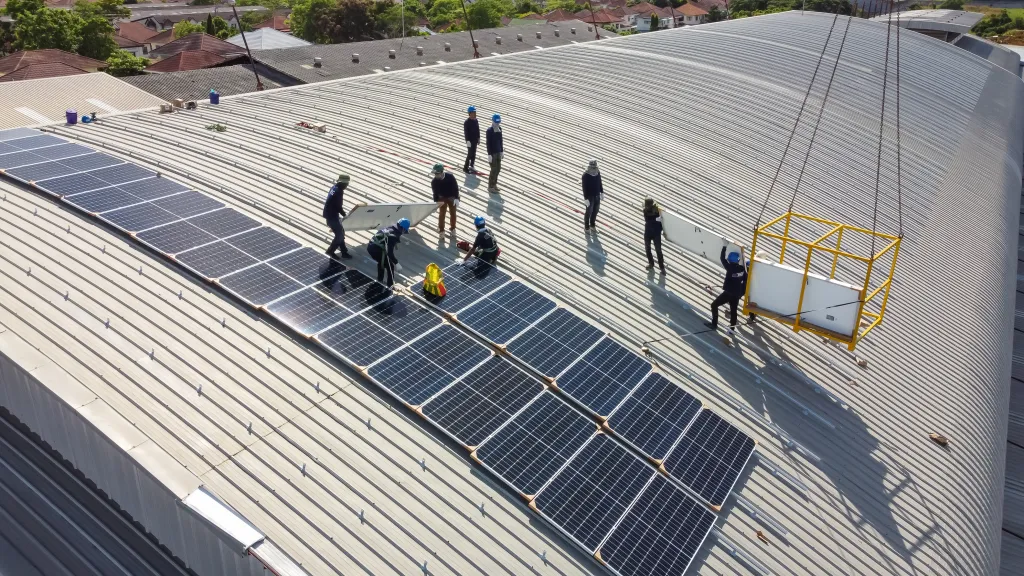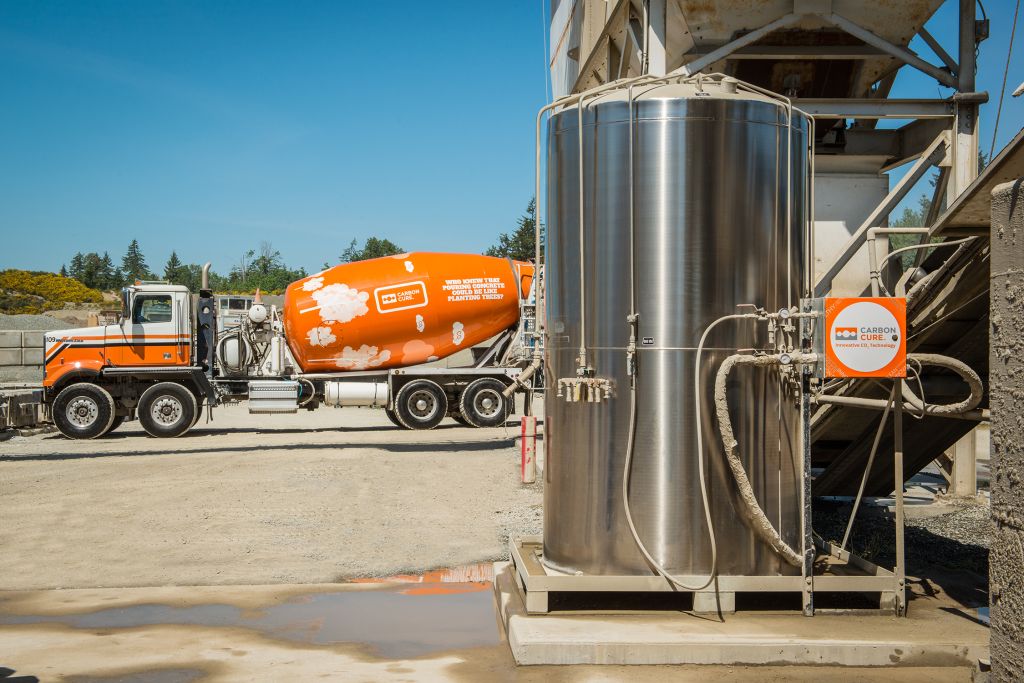The electrification of Canadian commercial vehicles is underway and this B.C.-based enterprise is at the forefront

Published June 5, 2024 • 6 Min Read
The Toronto-Waterloo Corridor is a popular choice for any technology company looking to plant Canadian roots. It’s home to more than 15,000 of these types of businesses, making it the largest tech hub in North America outside Silicon Valley. But innovation can happen anywhere – all it takes is an idea.
Chace Barber is the CEO of Edison Motors, a start-up that has been electrifying commercial vehicles – a company that found the space it needed in the British Columbia interior. Merritt is a 7,000-person community nestled in the Nicola Valley between Vancouver and the Okanagan. It isn’t a traditional innovation hub, but more of a logging and mining town. Following post-secondary education in economics and business, Barber and his business partner, Eric Little, worked in the logging industry while using their spare time to engineer electric diesel vehicles in a dirt field behind Barber’s parents’ house. Their logic was simple: commercial vehicles weren’t keeping pace with passenger vehicles in the move to electrification.
From its unlikely location in the B.C. interior, Edison Motors aims to change that.
“Basically, what Edison Motors is, is a bunch of truck drivers who built their own electric diesel truck after being unhappy with what the current industry was offering,” says Barber. “We were in the industry and got fed up with the planned obsolescence and so we basically said, ‘Well, we’ll do it ourselves.’”
It’s a familiar sentiment for entrepreneurs of all kinds: spot a problem; design a solution.
In Barber’s case, he was watching commercial vehicles, like logging trucks, cement mixers and other medium- and heavy-duty vehicles (MHDVs), failing to join the movement towards electrification.
“People in the industry that we spoke to were extremely skeptical at first,” says Barber. “But they understand the concept of electric diesel. It’s not because these people hate electric, but they’re concerned that the battery range for fully electric wouldn’t work for them.”
The electrification of MHDVs is an important step to help enable Canada to meet its targets of net-zero emissions and decarbonization of the transportation sector by 2050. Currently, 22% of Canada’s total greenhouse gas emissions are created by the transportation sector, and 80% of that is from on-road vehicles.
“Commercial vehicles tend to remain in service for extended time frames and accumulate many vehicle kilometers travelled,” Transport Canada said in an email to RBC. “This is why it is important to consider both the introduction of new zero emission vehicles while looking at options to reduce emissions from the existing stock of vehicles already on the road.”
The way Edison Motors is reworking existing diesel commercial vehicles is, in theory, quite simple.
“These are fully electric trucks that have their own on-board Level 3 fast charger, so the generator is only there for when the battery goes low. When the battery goes low, the generator fires up and recharges the truck so it can keep working,” says Barber. “There’s no physical connection to the drive line—it is completely electric.”
The company sources batteries from CATL, one of the leading global manufacturers for EV batteries and a supplier for other major companies like Tesla and Ford. Edison Motor’s agreement is to convert eight commercial trucks for different parties over the next two years, but the demand is exceeding that output. The team limited the first round of conversions in order to be certain it could meet delivery dates.
The interest in Edison Motors’ diesel conversions has been humbling. Barber credits much of the company’s initial success to the social media platform TikTok. The entrepreneur initially began his account to share day-to-day musings as a logging truck driver, but his audience has since morphed into a soundboard for his electric diesel vehicles at Edison Motors. Barber had 833,000 followers on TikTok at the time of publishing.
“We essentially crowdsourced the entire thing, from the design to the work itself,” says Barber, noting how people came out of the woodwork to help. “We were just very open and transparent with everything we were doing, what our designs were, how we were setting things up, what problems we ran into. When we’d run into problems, people would stitch my videos and make their own video, or they’d send an email asking to help out.”
Those who have made meaningful contributions along the way have received “a little equity in the company and bits of shares.”
“We’ve had this idea that if you help out, we’ll pass you a little bit of shares in the company, a little ownership for helping, and we’ll all put this together and kind of build this big thing up together,” says Barber.
He estimates that there have been about 130 or 140 people that have worked on the project thus far.
Transport Canada wants commercial vehicles fully electric
On the path to electrification, Edison Motors is taking early steps in the right direction.
“Electric diesel drivetrains have the potential to significantly improve fuel economy and, likewise, reduce vehicle emissions compared to conventional diesel internal combustion engine trucks,” says Transport Canada. “While this technology represents an improvement in many respects over conventional drivetrains and may in fact be a necessary solution to satisfying several particularly demanding trucking applications, achieving net-zero emissions goals will ultimately require the adoption of zero-emission vehicles.”
Electric diesel engine technology aside, Barber and his company are also helping fuel a bigger conversation among MHDV drivers and owners about battery power and how it can support their demands. MHDVs are often required to haul thousands of pounds of freight with daily long-haul travel and quick refueling times; fully electric vehicles that can handle this kind of work have yet to be proven on a larger scale.
“As battery capacity is added to meet the range demands of MHDVs, there are commensurate cost and weight implications that can challenge their adoption,” adds Transport Canada.
The federal government is actively working to help MHDVs make low-emission upgrades and retrofits. Currently, there are 87 models from 37 different brands, spanning eight vehicle classes eligible for the federal incentives offered through the Medium- and Heavy-Duty Zero-Emission Vehicles Program.
Further, the 2030 ERP outlines the importance of zero-emission vehicle adoption, including the decarbonizing of existing fleets of commercial vehicles, while Canada’s Action Plan for Clean On-Road Transportation has created a framework for reducing on-road vehicle emissions, including MHDVs, in order to meet the national net-zero emissions target by 2050.
Electrifying these types of vehicles is an important step towardsdecarbonizing on-road transportation emissions. With these targets in sight Edison Motors is making space, moving to a bigger location to meet demand. This spring, it’s moving its headquarters to the former site of a former heavy duty truck manufacturer. The facility is located in Terrace, B.C., 1,100 kilometres northwest of Merritt.
The rurally-situated technology company has its work cut out for it as it supports this first wave of MHDVs. But Barber isn’t scared.
“We’re not reinventing the wheel,” he says. “We’re making some commonsense improvements using technology that other heavy equipment already uses.” And that makes sense no matter where you are.
This article is intended as general information only and is not to be relied upon as constituting legal, financial or other professional advice. A professional advisor should be consulted regarding your specific situation. Information presented is believed to be factual and up-to-date but we do not guarantee its accuracy and it should not be regarded as a complete analysis of the subjects discussed. All expressions of opinion reflect the judgment of the authors as of the date of publication and are subject to change. No endorsement of any third parties or their advice, opinions, information, products or services is expressly given or implied by Royal Bank of Canada or any of its affiliates.
Share This Article





